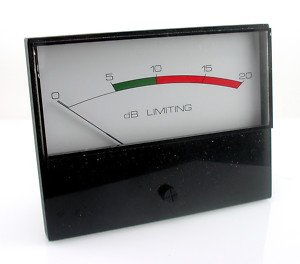The common features of dynamics processors explained
When used properly, compression can greatly add to the overall feel of a song. Recorded tracks are clearer, louder, and sit better within the context of the recording as a whole. However, misuse can result in distortion, lack of dynamic range, and an unexciting recording. Lets take a look at how a compressor works.
A compressor reduces input levels that exceed a selected threshold by a specified amount. This reduced dynamic range signal can then be boosted in level at the output, thereby allowing the softer signals to be raised above other program or background sounds. (Huber, Modern Recording Techniques)
Now that we got the textbook definition out of the way, lets look at this tool in real terms. As a dynamics processor, a compressor will “squeeze” together the dynamics (loudness/softness) of an inputed source. Basically, you are taking a sound and gently pushing it into a denser waveform. In effect, this will tame louder signals while making softer sections more audible. Any part of the signal entering the compressor above a certain level, or threshold, will be proportionately reduced to a lesser volume.
Since the loudest portions of the source material will now be turned down, it is possible to boost the entire level of the signal. In other words, since the dynamics have been reduced as a whole, the signal can now be amplified. The loud signals are still prominent, but the softer signals are much more present as well.
Most dynamic processors and compressors have a similar set of parameters. Here they are with a basic explanation of how to use the controls on a compressor:
Input Gain – how much signal is fed to the compressor
Threshold – this is the cut off level that initiates gain reduction. Signals that enter above this level will be attenuated according to the ratio, while signals that enter below will remain untouched. Some units may not have a threshold knob. With these, the input gain level controls the threshold – the higher the input gain, the lower the threshold level.
Ratio – the amount of attenuation. For example, a 3:1 ratio means that for every 3-dB of input signal over the threshold level, only 1-dB will be output. Generally speaking, ratios between 2:1 and 4:1 are considered “light” compression, while anything over 10:1 can be considered “heavy compression or “limiting”. A ratio of infinite:1 (“all buttons in” on an 1176) means only one 1-dB of signals above the threshold will pass to the output stage, no matter how high the input signal. Think of ratio as an input/output gain reduction ratio.
Attack – this controls how quickly the compressor responds to incoming signals that exceed the threshold level. For example, a fast attack time is ideal for sounds that have sharp and quick peaks – like a snare drum or hi-hat. In contrast, instruments such as acoustic guitar or bass have a longer sustain time, and may work better with slower attack settings. With a really fast attack, it is possible to actually hear the compressor kick in, causing a “pumping” sound.
Release – pretty much the opposite of the attack setting, release controls how long the compressor holds on to (stop compressing) a signal after it has fallen below the threshold range. As with attack, you have to experiment with this control to a find the most transparent setting. A quick release time may cause too fast of changes in dynamics, while too long of a release time could steal too many dynamics from the track.
Output/Make-up Gain – sets the level at which the reduced signal enters the mix. Use this to literally “make up” for the amount of gain reduction that has happened in the previous stages.
It is a well known fact: over compression will suck the life out of your signal. Transient peaks and some changes in dynamics breathe variety and flavor into your tracks. Think of compression as a tool to control dynamic range of a signal, but not eliminate it completely. This is why it is important to understand the above list of features. With this being said, trust your ears and remember that using compression is a compromise between your original and processed signal.

